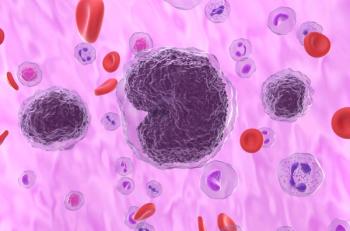
New Opportunities and Challenges in Hepatitis C
Hepatitis C is an enormously common disease that is often initially asymptomatic. New drugs are very effective, but expensive, and there has been reluctance to cover these treatments. Authors that published research in the hepatitis C special issue present their findings.
Jay Bhattacharya, MD, PhD, opens up the hepatitis C virus (HCV) briefing, which highlighted research published in The American Journal of Managed Care's special issue on HCV. He provided a brief overview of the scope of HCV infection in the US and around the world, as well as the reluctance on the part of payers to cover the expensive drugs, even though they essentially cure the disease.
Bhattacharya served as the guest editor of the special issue, gave short summaries of some of the papers that would be presented at the briefing, and introduced the speakers.
Darius Lakdwalla, PhD, gave attendees a better understanding of "the dismal science of economics" as it relates to the HCV cures. Since hepatitis C is largely asymptomatic for a number of years, it takes a while for the benefit of treatment to accrue, he explained.
"If you compare people who are successfully treated, essentially cured with no viral load in their body, and compare them to other people with hepatitis C, who still are infected with the virus, over the first couple of years there's not a really big difference in death rates among those 2 populations," he explained.
It takes about 15 years or more to start to see a difference, Lakdawalla said. Unfortunately, many of the people infected with HCV are covered by private insurance or Medicaid, and this is an economic problem because neither of those entities cover people for very long.
"So think about this: we've got a disease where the cost of it manifests long into the future ... 10, 15 years down the road," he said. "But private payers typically are only covering people for about 3 or 4 years. So that creates a significant problem where the payer that has to bear the cost of paying for the treatment doesn't stick around long enough to see the benefits in the future."
Anupam Jena, MD, PhD, outlined the wider public health value of treating HCV. As an infectious disease, curing one person reduces the likelihood of other people getting infected, which changes the way the value of drugs that treat and cure HCV is viewed.
Jena and his colleagues analyzed the impact paying for HCV drugs would have on liver transplants in the United States. There are 2 types of patients with liver disease: those with hepatitis C and those with liver disease from other sources, such as long-standing alcohol abuse, hereditary diseases, and fatty liver disease, which is related to obesity.
“Here’s a really unique example where treating patients with hepatitis C and curing them of the disease actually doesn’t just treat those patients themselves," Jena said. "It has these spillovers to patients with other forms of liver diseases."
Ryan Clary and the National Viral Hepatitis Roundtable, which co-hosted the briefing with the journal, have been working to expand access to treatments and end discriminatory restrictions against people who have HCV.
Unfortunately, most private payers and Medicaid programs have placed restrictions to HCV treatment access almost since the the first treatment was approved by the FDA. Clary outlined some of the practices, which include the requirement that patients have advanced liver disease before they are eligible for treatment.
"A lot of restrictions that you really don't see for any other chronic disease based on substance abuse; sobriety requirements; having to submit urine tests," he said. "Things that you don't have to do for any other chronic disease that I'm aware of."
Newsletter
Stay ahead of policy, cost, and value—subscribe to AJMC for expert insights at the intersection of clinical care and health economics.













































